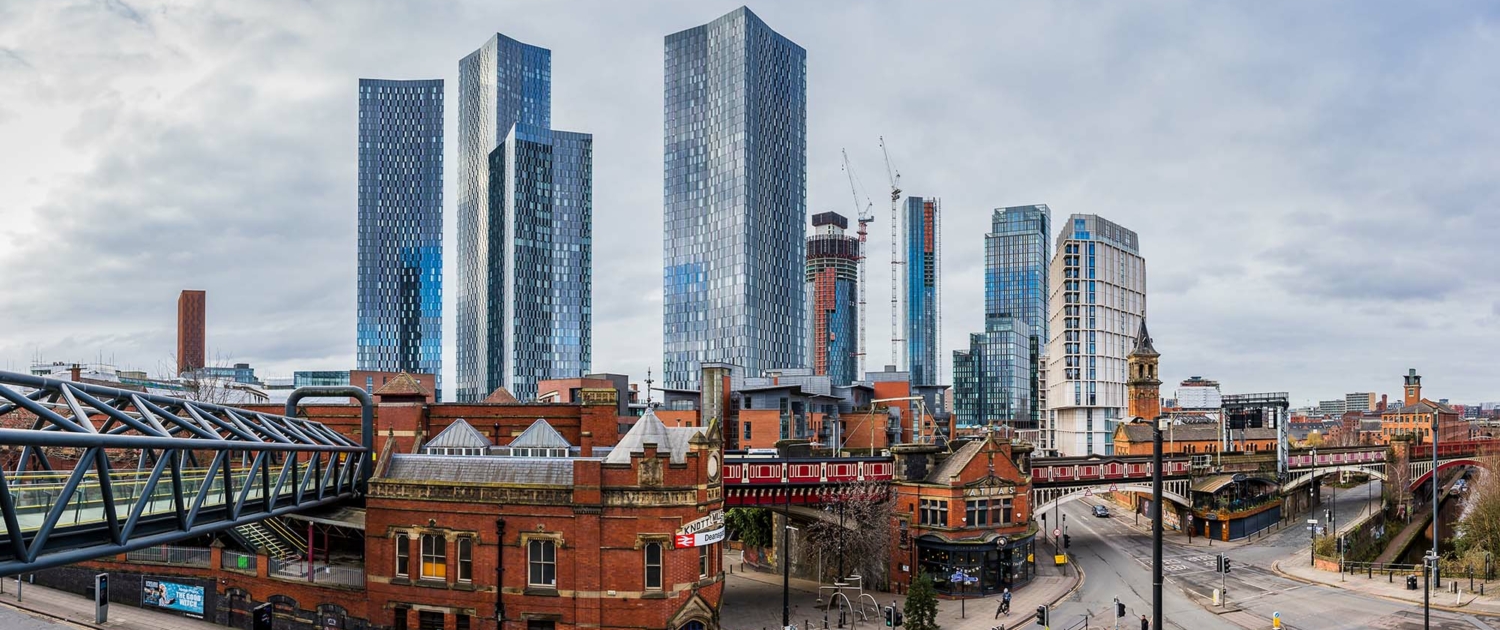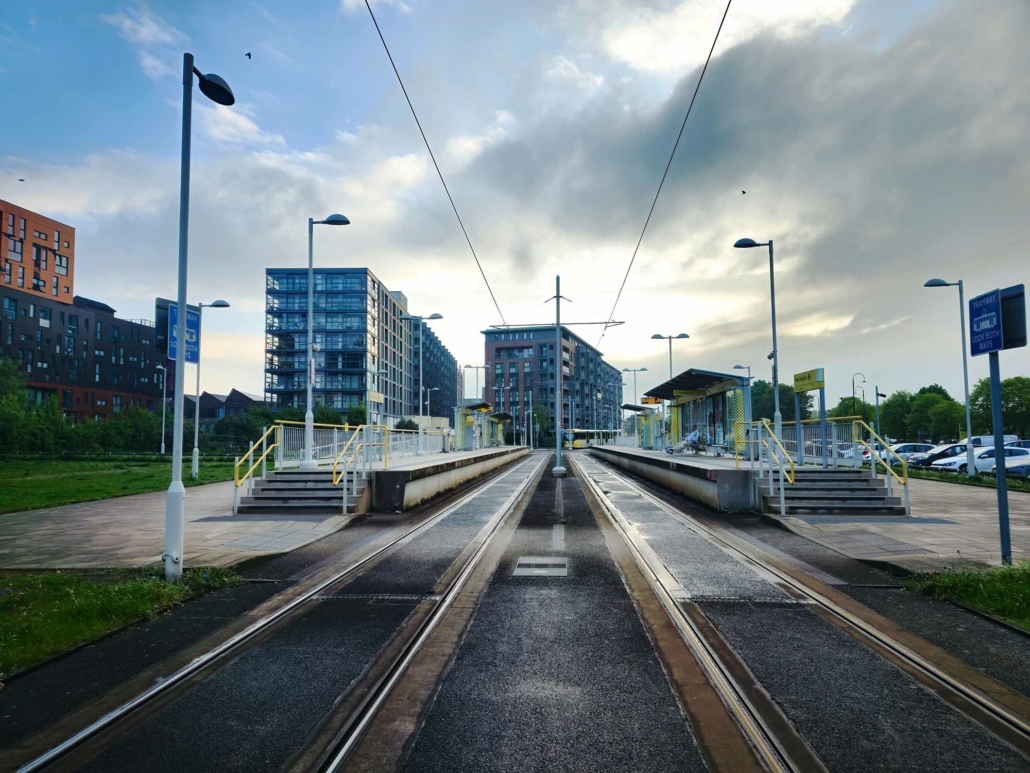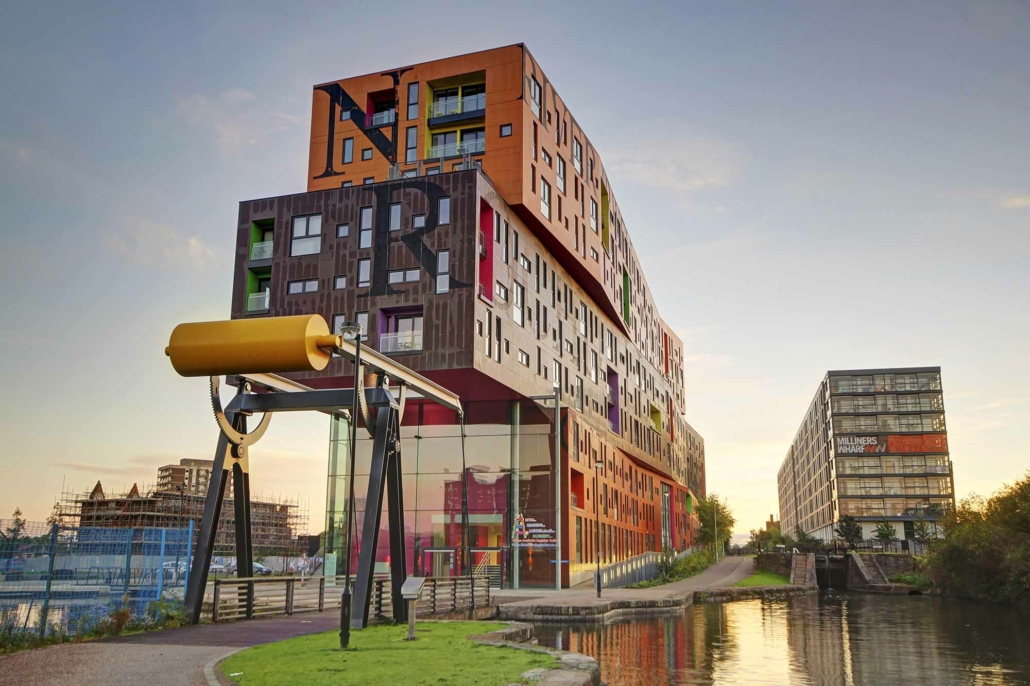Urban Regeneration in a Major UK City
Home > Manchester Case Study > A Case Study of Urban Regeneration in Manchester – New Islington
A Case Study of Urban Regeneration in Manchester – New Islington
New Islington is a part of the northern side of the city centre. A regeneration project started following the 2002 Commonwealth Games, which began to regenerate this area and Hulme and Moss Side—mainly managed by Urban Splash. However, Manchester City has contributed over £10 million since 2005 to aid the area’s regeneration.
Why was the regeneration needed in New Islington?
Large areas of this particular area were in decline. The end of the Industrial Revolution left huge factories here vacant, and the social housing built to house factory workers was of poor quality. One example is the Cardroom Estate – 50% of the houses in the estate were unoccupied or home to squatters by the mid-1990s. There were huge problems with unemployment, drug problems, vandalism and burglary, which led to people moving out of the area, increasing the problems further.
Regeneration of local areas along the canal and into the city centre led to a demand for new housing in the Bradford/Clayton area for young professionals wanting to rent privately. This meant developers bought the old mills and factories and converted them into flats. The regenerated buildings, such as ‘Old Mill’ on Merril Street, have created vast numbers of flats with an industrial feel. They are high quality with balconies and exposed pipes/wires. However, they are not affordable, so this has not helped create local housing for people.
What were the main features of the project?
One thousand seven hundred new houses were constructed in the area, some of the existing social housing has been improved, and local facilities have been rebuilt to help encourage people to stay. Social facilities such as a health centre, primary school, village hall, cafes and restaurants were added, and public transport improvements, including a new bus route and a New Islington Tram stop.
There has also been some green improvement, such as adding an orchard, a new football pitch and an eco-park, which have increased the area’s attractiveness. There have been huge improvements along the city’s waterways to encourage people to use paths and cycle lanes rather than drive into the city centre.
As well as the old mills being converted into new residential accommodation, services such as bars, shops and restaurants have also been added to persuade residents to stay in the area.
New flats have also been constructed.
Historical buildings such as the original Manchester Hospital have been preserved where possible to try and keep some of the historical relevance of the area. However, new signs, benches and bins have been added to improve the aesthetics. Lighting and pedestrianised streets have been added to improve the area’s safety.
How successful has the regeneration been in New Islington?
The regeneration of New Islington has been generally successful; it is, however, still not finished, making it harder to assess fully.
The new housing has dramatically improved the area, significantly decreasing derelict properties. However, due to the demand for housing in this area, the house prices are incredibly high and very few were kept for social housing. So, you could argue that it hasn’t been as successful as planners hoped. The government and the local council have implemented regulations to ensure that any future redevelopment has more social housing. However, this isn’t as desirable to developers as they can’t sell flats for as much money, which may discourage investment.
The new waterway paths and cycle lanes are incredibly successful and have improved the area’s aesthetics. When you visit the New Islington Basin, you can see how well-used the area is, with adults and children enjoying the green space. However, some vandalism is already present here, and the area to the north along the canal has some problems with antisocial behaviour, including drug use and vandalism.
Quiz
Related Topics
Use the images below to explore related GeoTopics.





